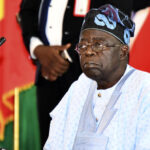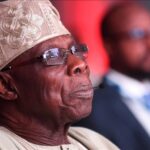In Nigeria’s political discourse, the Middle Belt is not a geographical expression; it is a cultural and political affirmation with its roots in opposition to the definition of “One North” by the Hausa/Fulani oligarchy when they established the Northern Peoples’ Congress (NPC) in 1951. The NPC had two opposition flanks, from the left in the form of Aminu Kano’s Northern Elements Progressive Union (NEPU) and the other from Northern Christians in the form of the United Middle Belt Congress. We learn from Billy Dudley’s “Parties and Politics in Northern Nigerian” that organised opposition to what was perceived as the emergence of Hausa-Fulani hegemony was expressed among the non-Muslim populations in Benue, Niger, Plateau, Bauchi and Zaria provinces. He points out that the opposition first took an organisational form with the formation under Birom initiative of the Northern Nigeria Non-Muslim League in 1950, aided by the Christian Missions. Immediately after that, a number of political organisations emerged in the area such as the Tiv Progressive Union, Wurkum Tribal Union, Middle Zone League and the Middle Belt Peoples Party, with the last two merging to form the United Middle Belt Congress (UMBC) in 1955. Dudley is affirmative that the UMBC was established as a front to contest Muslim Hausa-Fulani hegemony. Central to the politics of the Middle Belt therefore is their relationship with the Hausa-Fulani. According to my good friend, Professor Sonni Tyoden, it is a relationship of subordination, oppression and exploitation. The intellectual argument for this is derived from the doctoral thesis of Chunun Logams on internal colonialism in Northern Nigeria and a representative current expression is found in the book “Right to be Different” edited by N. Bagudu and D. Dakas and published by the League for Human Rights.
The basic argument of internal colonialism is that there was an attempt following the Jihad to Islamise the Nigeria area but most of the people within the cultural Middle belt resisted. However, for centuries, they were victims of slave raids from the Muslim states to feed the Trans-Saharan slave markets. Following colonisation however, the British went into a pact with the rulers of the Caliphate to govern the North and the result was that Muslim rulers were imposed on many communities that had not previously been conquered by the Caliphate. In the build up to independence, many such communities were afraid that independence would lead to the Islamisation of the cultural Middle Belt.
In the 1950s, many representatives of the ethnic minorities complained before the Willinks Commission that the Hausa/Fulani were contemptuous of them and called them “arna”, meaning pagan or infidel. The Willinks Commission, it will be recalled, was established by the British Authorities to look at the fears of ethnic minorities before independence. The complaint about the name calling “arna” recurs in the reports of the numerous commissions of inquiry that have investigated the various ethno- religious crises afflicting Northern Nigeria over the past thirty years. In the 1960s, the agitation in Tiv land was very much part of this resistance. The current battles between indigenes and settlers with its epicentre in Jos are a continuation of this struggle.
The Middle Belt Forum today serves as a voice for these minority groups. It is a successor to earlier movements such as the United Middle Belt Congress led by Joseph Tarka. Air Commodore Dan Suleiman (rtd), former governor of Plateau State and chairman of the Forum has described the middle belters as “grossly marginalised and have become an endangered species on the brink of extinction and cultural annihilation.” It was this marginalization that was seen as the cause for the refusal to create a Middle Belt region in 1963 when the middle belters felt they needed their region more than the Mid- Westerners.
Of course the story should have changed since the creation of states. In Benue, the hegemons today are the Tiv while on the Plateau; it is the Biroms and so on. Since the creation of states therefore, it is difficult to sustain the thesis of internal colonialism especially as we had military rule for 29 years and the people of the Middle Belt were dominant in the army during that period. The moment of political reconciliation in Northern Nigeria was 1978 when the historic leader of the Middle Belt led his people into the National Party of Nigeria. The romance did not last long. Indeed, in 1979, Governor Solomon Lar of Plateau State launched the “Emancipation Programme” to free his people from hausa/Fulani hegemony. When on 9 August 2001, a delegation from the Arewa Consultative Forum (ACF), visited Jos, the then Governor, Joshua Dariye made it clear that they were not interested in being marginalized and they would prefer to remain “middle-belters”.
This was the sentiment the Jonathan Campaign Organisation tapped into to secure significant votes in the Middle Belt in the 2011 Presidential Election. In a lot of the “off the press” campaigns, the argument was that the Niger Delta and the Middle Belt have both suffered enormously from internal colonialism and significant marginalization by their respective “majority” oppressors – the Igbos and the Hausa/Fulani and needed to team up to give power to the minorities. I guess this means that the Middle Belters are now enjoying the perquisites of political power. As alliances and political re-composition towards the 2015 elections build up, it would be interesting to see how the relationship develops.
One key factor is of course the Boko Haram insurgency which is fuelling and reinforcing long felt belief in the Middle Belt that there is a coordinated plan to Islamise Nigeria and Boko Haram is the current instrument for achieving the said objective. Since the 1980s, a series of bloody conflicts with a specific Muslim versus Middle Belter connotation have afflicted Northern Nigeria starting with Kasuwan Magani in 1984. They have been repeated many times in Zango Kataf, Gure-Kahugu, Kafanchan, Bauchi, Kaduna, Lere, Jos, Tafawa Balewa and so on.
The first major conflict was that of Kafanchan in March 1987. A quarrel erupted between Christian and Muslim students during a Christian evangelical campaign at the Kafanchan College of Education. The crisis was ignited by allegations that a convert from Islam to Christianity, Abubakar Bako, had misinterpreted the Holy Qur’an while preaching. This led to a fight between Christian and Muslim students on the Campus. The fight spread to Kafanchan town where many Muslims were killed. Revenge killings than followed in six other towns in Kaduna State,Katsina, Funtua, Zaria, Kankia, Daura and Kaduna in which the Muslim communities made reprisal raids on Christian settlers, many of whom were killed. There was also destruction of Churches, Mosques, beer parlours etc.
 Join Daily Trust WhatsApp Community For Quick Access To News and Happenings Around You.
Join Daily Trust WhatsApp Community For Quick Access To News and Happenings Around You.


